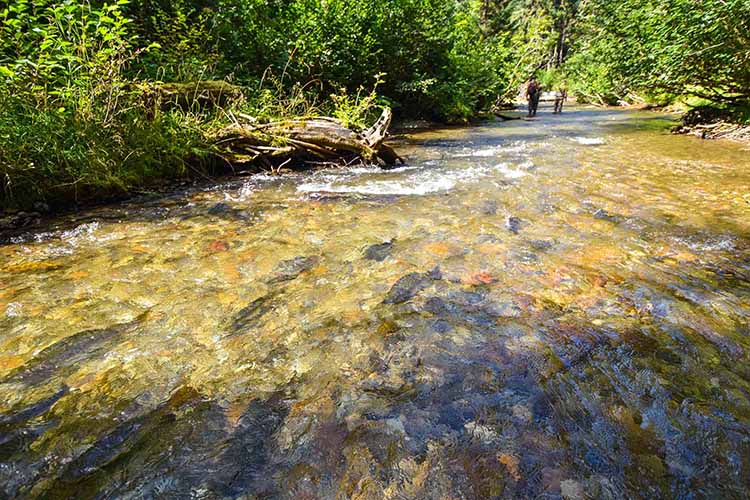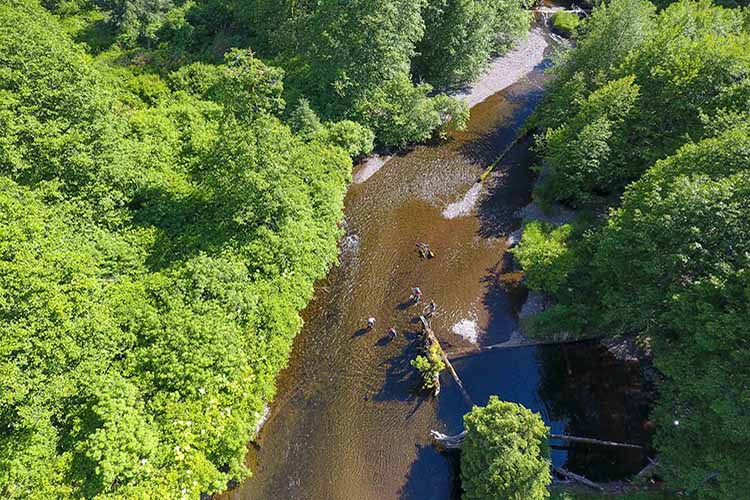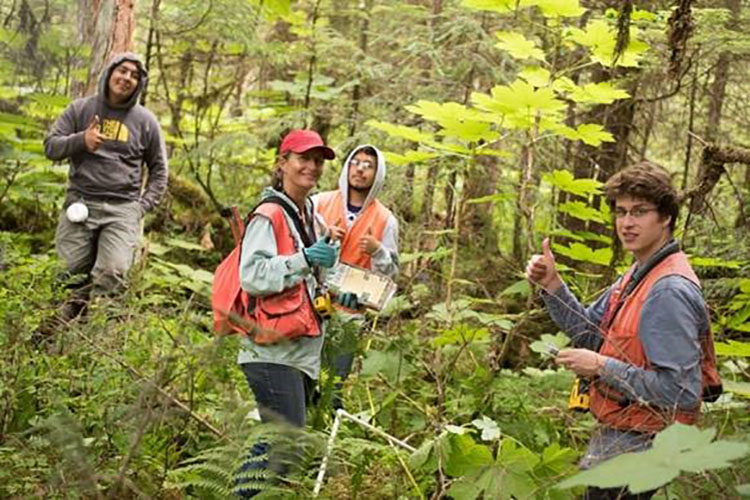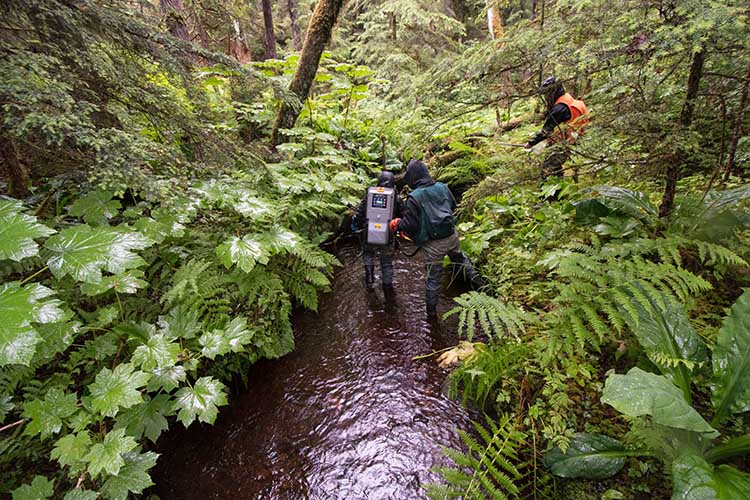This Friday visit the remote village of Hoonah, located near the capital of Juneau in Southeast Alaska. Generations of Alaska Native people have thrived upon the land and all that it supports. A common cultural thread weaves Alaskans together in this enormous state: they are hunters, harvesters, gatherers, and fishers.
An Ancient Way of Life
In the village, the Huna Tlingit people and local residents have cultural roots that are deeply entwined in the land and waters surrounding their community.
With access to fresh berries, wild game, and several types of salmon, the people of Hoonah have built a life around the valuable resources that the forests and streams surrounding their town provide. These resources are predominately what fill the freezers and bellies of residents in Hoonah, not only because of the cultural and long-established ties to traditional harvest-based living, but also because living in rural Alaska requires it.

Natural resources here are the basis for generations of art, songs, and storytelling. They provide food, jobs, and are valued as part of the community itself. The importance of maintaining healthy watersheds is critical to the lives and livelihoods of residents.
Hoonah Native Forest Partnership
The Hoonah Native Forest Partnership was formed in 2015 to help protect, conserve, and maintain the stream and forest habitats that are integral to the Hoonah way of life.
The partnership is an alliance of landowners, organizations and stakeholders advocating for the Hoonah area. It works to assess resource conditions and identify projects intended to improve fish and wildlife habitat, ensure long-term timber production, and support sustainable watershed management.

"One of Huna Totem’s guiding principles is to maintain our land in perpetuity,” said Amber Henderson, Director of Project Administration, Huna Totem Corporation. “As such, we put a high priority on the management of its lands and resources, which includes ensuring the sustainability of subsistence resources such as fish, game, edible products such as berries, as well as potential future timber crops."
Regional Conservation Partnership Program
The initial source of startup funds for the HNFP came from USDA’s Natural Resources Conservation Service through the Regional Conservation Partnership Program. The program relies heavily on partner organizations to spearhead projects and provide matching contributions.
The partnership submitted a proposal for the first round of RCPP funding in 2014 and was selected the following year. Putting partners in the driver’s seat, RCPP helps implement conservation projects across the landscape while leveraging significant support and funding from public and private sector organizations. The total investment for the HNFP project is $2.4 million, with USDA contributing $1.9 million.

“The pace and scale of a watershed-scale project of this magnitude simply could not be achieved by NRCS alone, or by any one group," said NRCS Alaska State Conservationist Alan McBee. "That's the biggest benefit of RCPP. It allows us to co-invest with multiple partners across the landscape and capitalize on everyone's unique expertise, staff, funding and resources."
NRCS worked directly with three private landowner entities, the Hoonah Indian Association, Sealaska, and Huna Totem Corporation.
"The experience of working with NRCS has been beneficial in providing funding, leadership, and continuity for the HNFP projects across four land ownerships,” said Amber.
Community Development
The partnership is increasing the local workforce capacity in Hoonah by creating jobs and providing specialized training that will help the community maintain this type of work into the future.
With the continuation of RCPP support for the HNFP, many more conservation projects are planned for implementation over the next several years - improving resource conditions for fish, wildlife, and local residents who live and thrive in Hoonah.

“We live by and lead with our Tlingit, Haida and Tsimshian values, knowing the work we do today will benefit our grandchildren," said Anthony Mallott, Sealaska president and CEO. "These values inspire everything we do. We put community first, build strength and resilience, and act with courage and curiosity. We embrace Haa Aaní, committing to care for our oceans and lands because they have always been, and always will be, the foundation of our people."
If you’re a landowner interested in participating in an RCPP project in your state, contact your local service center.
More Information
Each Friday visit local farms, ranches, forests, and resource areas through our Fridays on the Farm stories. Meet farmers, producers, and landowners who are working to improve their operations with USDA programs.
USDA offers a variety of risk management, disaster assistance, loan, and conservation programs to help agricultural producers in the United States weather ups and downs in the market and recover from natural disasters as well as invest in improvements to their operations. Learn about additional programs.
For more information about USDA programs and services, contact your local USDA service center.
Samia Savell and Tracy Robillard work with NRCS in Alaska.


